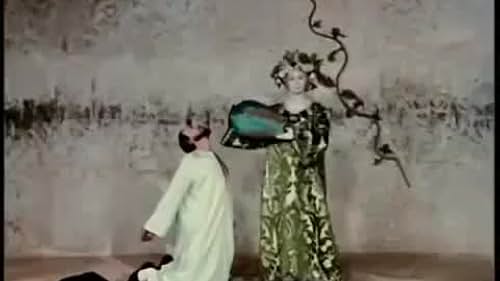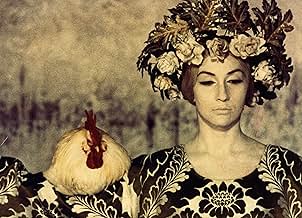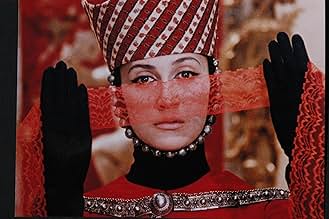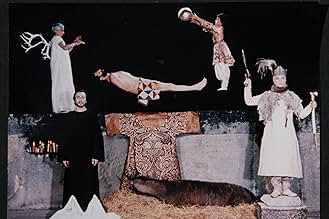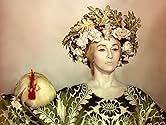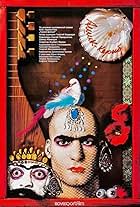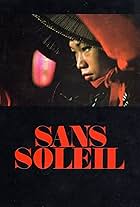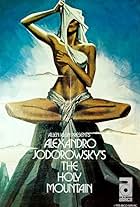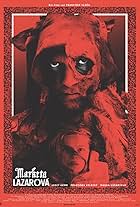The life of the Armenian poet Sayat-Nova, from childhood to death: his spiritual journey, artistic endeavors, and inner conflicts within the cultural and historical context of Armenia. Haile... Read allThe life of the Armenian poet Sayat-Nova, from childhood to death: his spiritual journey, artistic endeavors, and inner conflicts within the cultural and historical context of Armenia. Hailed as revolutionary by Mikhail Vartanov.The life of the Armenian poet Sayat-Nova, from childhood to death: his spiritual journey, artistic endeavors, and inner conflicts within the cultural and historical context of Armenia. Hailed as revolutionary by Mikhail Vartanov.
- Awards
- 1 win & 1 nomination
- Poet as a Child
- (as M. Alekyan)
- Poet as an Old Man
- (as Giorgi Gegechkori)
- Director
- Writers
- All cast & crew
- Production, box office & more at IMDbPro
Storyline
Did you know
- TriviaSergei Parajanov's 1969 masterpiece "Sayat Nova" was censored, re-cut, renamed (The Color of Pomegranates) and banned; its 1969 behind-the-scenes documentary Paradjanov: The Color of Armenian Land (1969) by Mikhail Vartanov was suppressed and the footage reappeared 20 years later in Mikhail Vartanov's influential documentary Parajanov: The Last Spring (1992), which demystified the unique film language of "Sayat Nova." Parajanov's "Sayat Nova" (The Color of Pomegranates) appeared on many lists of The Greatest Films of All Time (Sight and Sound, Cahiers du Cinema, Movieline, Time Out, etc). Mikhail Vartanov famously wrote: "Probably, besides the film language suggested by Griffith and Eisenstein, the world cinema has not discovered anything revolutionary new until (Sergei Parajanov's) Sayat Nova - The Color of Pomegranates." Michelangelo Antonioni later added that the film "astonishes with its perfection of beauty."
- Quotes
Poet as a Youth: In this healthy and beautiful life my share has been nothing but suffering. Why has it been given to me?
- Alternate versionsRESTORATION PROLOGUE: Two versions of this film have been restored. The Armenian version ('Parajanov's cut') was restored using the original camera negative, provided by Gosfilmofond in Russia as well as a 35mm dupe negative held by the National Cinema Centre of Armenia. The Russian version ('Sergei Yutkevic's cut') has been preserved for posterity using the original camera negative." "The editing and title cards of 'Parajanov's cut' have been reconstructed thanks to a careful analysis of all existing sources, including an Armenian reference print that matches the dupe negative." "The original camera negative has been scanned in 4K by Gosfilmofond in Russia and restored by L'Immagine Ritrovata in Bologna. The sound restoration was made from the original magnetic track, preserved by Gosfilmofond, in addition to the Armenian reference print." "A vintage print of the film, produced on Orwo stock and preserved by the Harvard Film Archive, was used to guide the grating phase." "At the time of the film's release, the Russian censors decided that the film did not reflect Sayat Nova's life and renamed the film 'NRAN GUYNE' which translates to 'THE COLOR OF POMEGRANATES.' Despite this intervention, the film remains internationally recognized by Parajanov's original title SAYAT NOVA."
- ConnectionsFeatured in Paradjanov: The Color of Armenian Land (1969)
- How long is The Color of Pomegranates?Powered by Alexa
Details
- Release date
- Country of origin
- Official site
- Languages
- Also known as
- Red Pomegranate
- Filming locations
- Production companies
- See more company credits at IMDbPro
Contribute to this page


